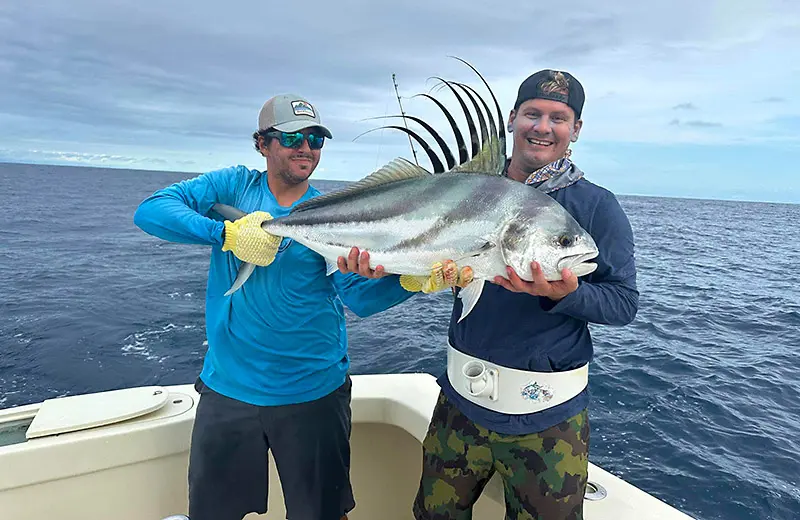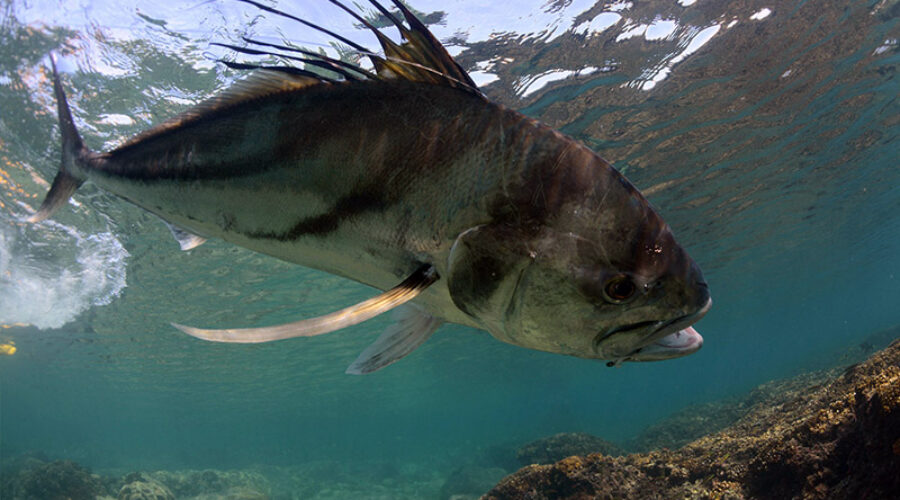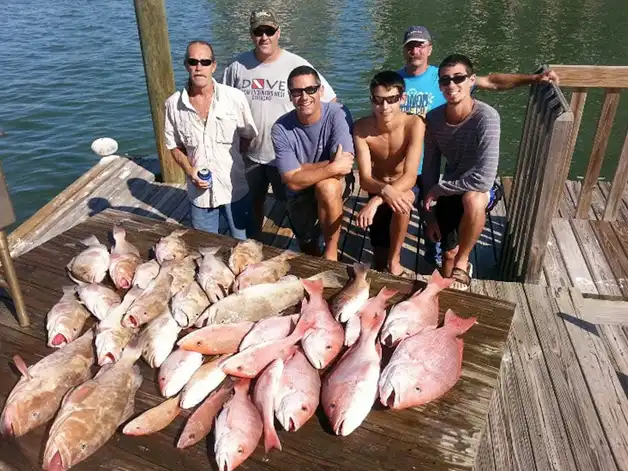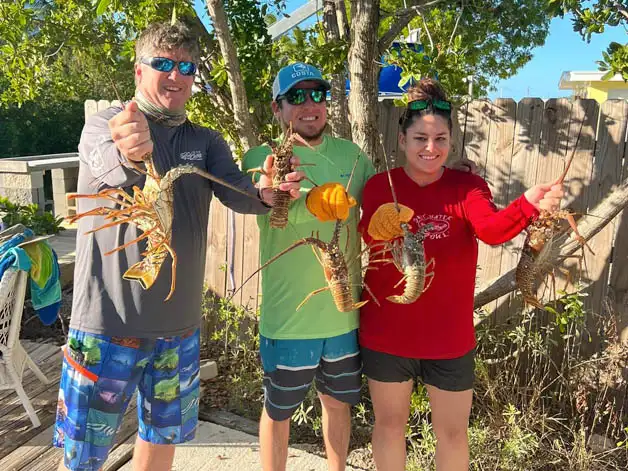Los Suenos Roosterfish Fishing
Costa Rica’s Los Suenos is a renowned fishing destination that attracts anglers from around the world, and one of the most sought-after species in its waters is the Roosterfish (Nematistius pectoralis). The area’s warm waters and diverse marine ecosystem create the perfect conditions for Roosterfish to thrive. These striking fish are known for their unique appearance, with long dorsal fins resembling a rooster’s comb, hence the name “Roosterfish.” They are strong and aggressive fighters, making them a popular target for sport fishing enthusiasts.
Roosterfish are typically found along the Pacific coasts of the Americas, with Los Suenos offering some of the best opportunities for anglers to catch them. Their preferred habitat includes rocky shores, reefs, and coastal areas with strong currents, where they feed on smaller fish, crustaceans, and squid. Understanding the behavior and habitat of Roosterfish is essential for a successful fishing trip.
Los Suenos experiences distinct seasons, and the Roosterfish’s activity varies throughout the year. While they can be found year-round, peak Roosterfish season in Los Suenos generally aligns with the dry season, from December to April. During this time, the water visibility is excellent, creating optimal conditions for sight fishing. However, it’s essential to check local fishing reports and consult with experienced guides to plan your trip during the most productive periods.
Roosterfish fishing in Los Suenos is not just about the thrill of the catch; it also emphasizes the importance of sustainable fishing practices. As a responsible angler, it’s crucial to understand and abide by local fishing regulations, including catch-and-release practices, size limits, and bag limits, to ensure the conservation of this iconic species for future generations.
Understanding Roosterfish and Their Habitat
Roosterfish are visually striking, making them easily recognizable among other fish species. They have a silver to dark blue or greenish coloration with distinctive dark stripes running along their sides. The most prominent feature is the long, comb-like dorsal fin, which can extend the entire length of their back. This unique characteristic is used to corral and confuse prey.
In Los Suenos, Roosterfish are commonly found near rocky shorelines, reefs, and sandy drop-offs, often in shallow waters close to the coastline. They prefer areas with strong currents as these provide ample opportunities to ambush their prey. These fish are solitary by nature, although they can be found in small groups during certain times of the year.
Understanding the seasonal patterns of Roosterfish activity is vital for a successful fishing trip. During the wet season, from May to November, Roosterfish can be more scattered as they seek deeper waters to find prey. In contrast, the dry season, from December to April, provides better visibility and a higher chance of encountering these fish in the shallower coastal regions.
Roosterfish are known for their aggressive feeding behavior, which is why they respond well to a variety of fishing techniques. They are voracious predators and primarily feed on small baitfish, crustaceans, and squid. Topwater lures, live bait, and artificial jigs are among the most effective methods for enticing these fish to strike. However, since Roosterfish are sensitive to environmental changes, practicing catch-and-release ensures their survival and the continued health of the ecosystem.

Planning Your Roosterfish Fishing Trip
Timing is critical when planning a Roosterfish fishing trip to Los Suenos. As mentioned earlier, the best time to target these fish is during the dry season, from December to April. During this period, the weather is generally more predictable, with calmer seas and better visibility, making it ideal for fishing.
To make the most of your Roosterfish fishing experience, consider booking a reputable fishing charter or hiring a local guide service. Experienced guides possess invaluable knowledge of the area’s fishing grounds, understand the behavior of Roosterfish, and can provide valuable insights into the best tactics for a successful catch. They can also assist with obtaining the necessary permits and licenses required for fishing in Costa Rica.
Fishing charters offer a range of options, from half-day trips to multi-day excursions, depending on your preferences and availability. It’s advisable to book well in advance, especially during the peak fishing season when demand is high. Research and read reviews to ensure you select a reputable and responsible charter that prioritizes sustainable fishing practices.
Before embarking on your Roosterfish fishing adventure, familiarize yourself with local fishing regulations and guidelines. Costa Rica places a strong emphasis on conservation, and understanding catch-and-release practices, size limits, and bag limits is essential to support the preservation of the Roosterfish population and the marine ecosystem as a whole.
Fishing Techniques for Roosterfish
Roosterfish are aggressive and opportunistic predators, making them responsive to a variety of fishing techniques. The choice of tackle and gear plays a significant role in the success of your fishing trip. Medium to heavy spinning or conventional rods with strong and sensitive reels are commonly used to handle the fight that Roosterfish put up when hooked.
Live bait is a popular choice when targeting Roosterfish. Common baitfish used include mullet, sardines, and small mackerel. The bait is usually slow-trolled or casted near the coastline, allowing the Roosterfish to hone in on the scent and movement of their prey.
Artificial lures, especially topwater lures, can also be highly effective. Roosterfish are known to be drawn to surface disturbances, and seeing a topwater lure mimic the movements of a struggling fish can trigger aggressive strikes. Stickbaits, poppers, and surface-walking lures are among the popular choices for enticing Roosterfish to bite.
When casting, aim for areas near rocky structures, reefs, or sandbars, as these are prime hunting grounds for Roosterfish. Patience and accuracy are crucial, as these fish can be elusive and easily spooked. Proper boat positioning is essential to avoid spooking the fish, and maintaining a stealthy approach can increase your chances of a successful catch.
It’s essential to remain adaptable and open to trying different techniques throughout the day, as Roosterfish behavior can change with tide shifts and other environmental factors. An experienced fishing guide can be instrumental in helping you identify the most effective strategies based on the prevailing conditions.
Roosterfish Conservation and Responsible Fishing
Roosterfish conservation is of paramount importance in Los Suenos, as it is in all fishing destinations. Sustainable practices are crucial to protect the Roosterfish population and maintain the ecological balance of the marine environment.
One of the most critical practices is catch-and-release fishing. While catching a Roosterfish is an exciting experience, returning it to the water unharmed ensures that the species can continue to thrive. When practicing catch-and-release, handle the fish with care, minimizing the time it spends out of the water, and use appropriate equipment to avoid causing unnecessary stress or injury.
Adhering to size and bag limits is essential for responsible fishing. Regulations are in place to prevent overfishing and maintain a healthy population of Roosterfish. It is the responsibility of every angler to be aware of and comply with these guidelines to support long-term sustainability.
As visitors to the area, it’s also essential to respect the natural habitat and marine life. Avoid leaving any trash or fishing gear behind, and be mindful of the delicate ecosystems surrounding the fishing grounds.



